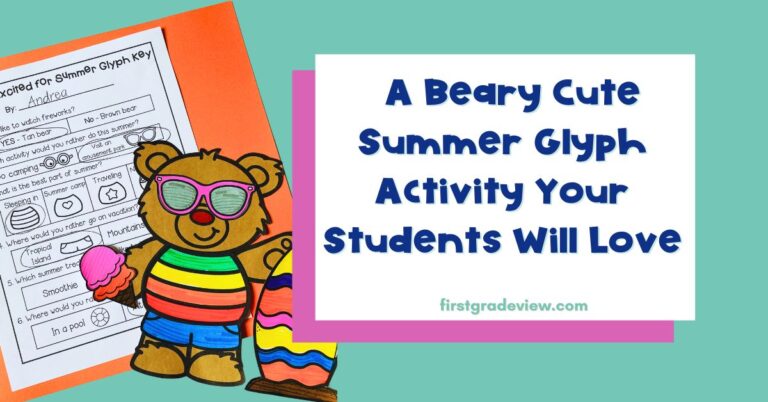I didn’t always have a student centered math classroom. In fact, in the beginning of my career, I would teach particular strategies and have students carry out the procedures whether they truly understood them or not. This would often lead to a cycle of confusion, frustration, and reteaching. The thought of this still makes me cringe. However, I have come a long way since then. Today, my goal is to help students develop a conceptual understanding of math. In order to do that, I had to shift my mindset about math instruction. Here are 5 ways to accomplish a positive student centered math classroom.
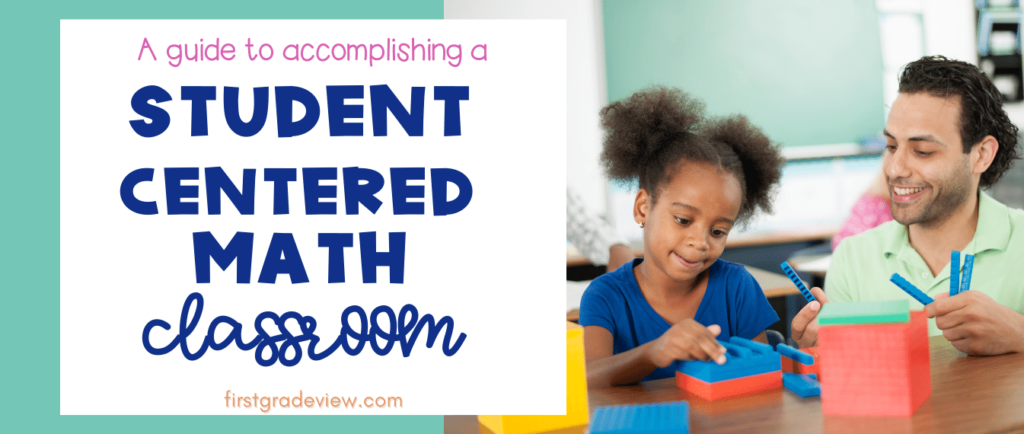
Incorporate Inquiry Based Math Tasks
While students should be engaging in meaningful math practice, they do not need a set of 30 math problems to solve in order to get better at math. When teachers use instructional activities where students are involved in sense making and critical thinking, it has a much bigger impact.
One of the best ways to achieve this is through incorporating inquiry based math tasks into your instruction. This can be done in many ways such as math talks, posing word problems, having students take part in meaningful fact practice, and project based math projects.
Math talks are great because they don’t take up a lot of instructional time but make a huge impact. Students are able to share their math thinking and learn from their peers. With word problems, the focus is more on the process as opposed to the product. Students need to understand the structure of the word problem before they can plan their strategy on how to solve it. Meaningful math fact practice can take place in many forms such as in number routines, math mysteries, math games, and more! Project based math projects yield high engagement. Also, due their inquiry based nature, have math understanding built in. All of these activities will help foster a student centered math classroom.

Welcome Multiple Strategies
In a student centered math classroom, it is important to acknowledge all strategies. This helps students to see that multiple approaches can be taken to find the solution. When students discuss their math strategy or a strategy their peer has used, they develop a deeper understanding. This can also help students to move towards more efficient strategies by seeing how one strategy can relate to another.
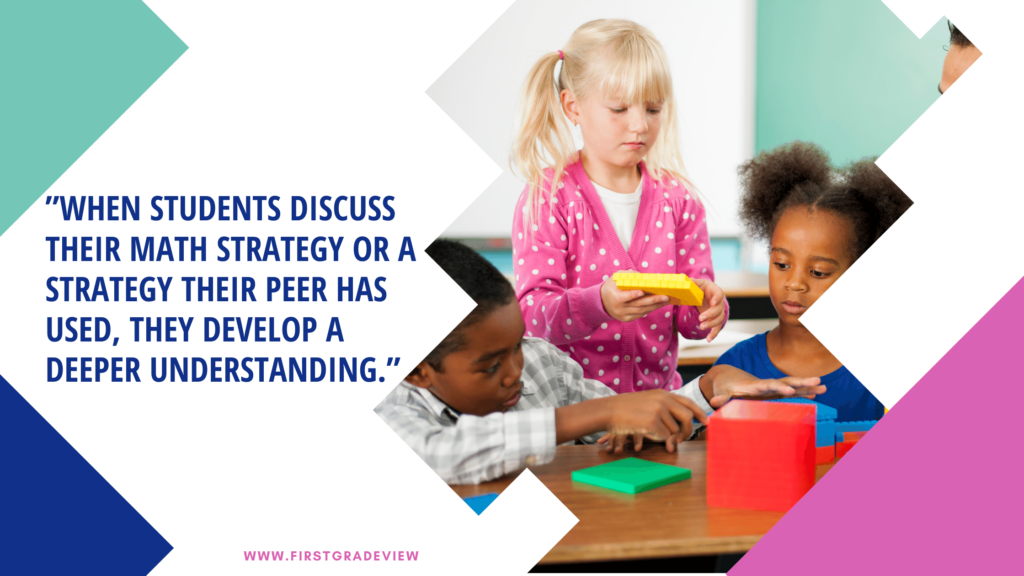
In the example below, you can see the multiple approaches students took to solve the same problem. When you chart their thinking, it serves as a valuable tool for other students to see multiple strategies and how they are alike and different. It also helps students visualize how they can represent their math thinking.
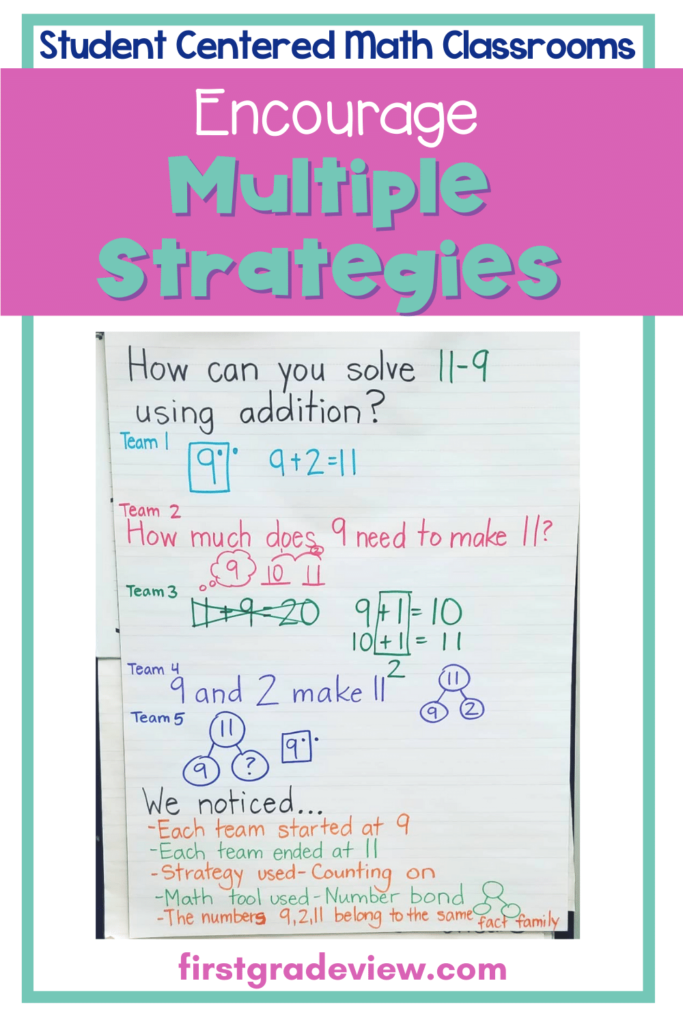
Engage in Math Discussions
Math talks are a key component in student centered learning. Encouraging student to student dialogue helps students clarify their thinking and explain their reasoning. Students also practice the skill of being a listener and being respectful of others’ ideas. Math talks can incorporate students sharing their math strategies, discussing similarities and differences between strategies, and also by asking for clarification on a strategy a peer has used.
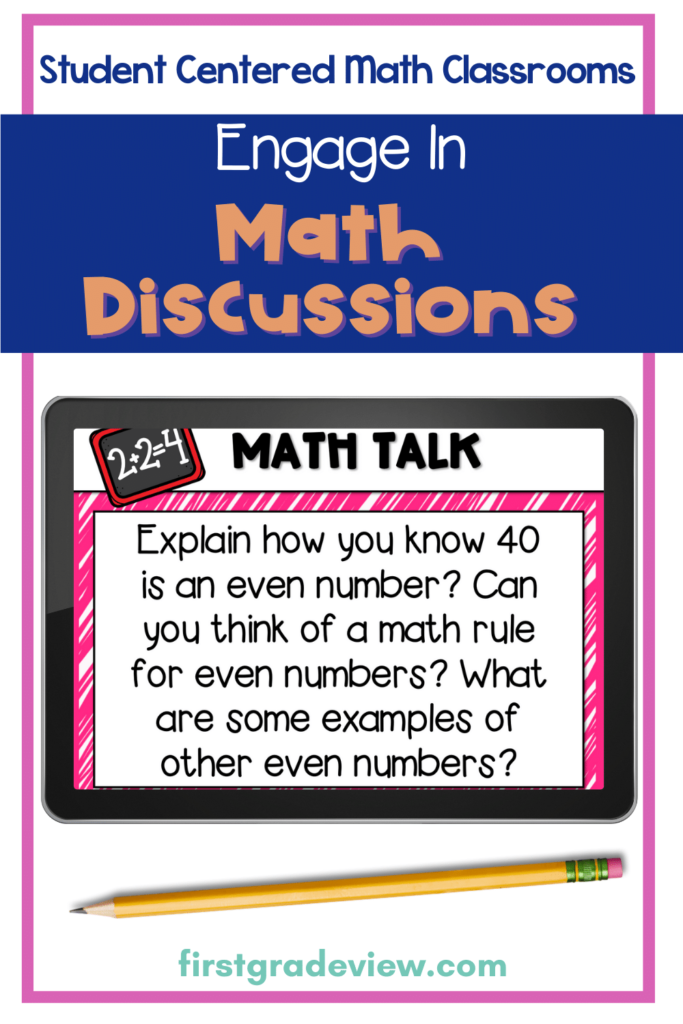
View Mistakes As Opportunities for More Learning
In a student centered math classroom, students need to feel safe with making mistakes. If guidelines for math discussions have already been set, it will help students feel more comfortable sharing their ideas. We want our students to be okay with making mistakes since they provide an opportunity for more learning.
Focus on Conceptual Understanding
When teaching math to your class, you want students to develop their conceptual understanding. Not only do you want students to know what to do, but you also want them to know why. Rather than teaching procedures, it is important to teach for understanding. For example, students should not only know how to carry out addition and subtraction, but they should also know how the operations are related.
Teaching for conceptual understanding develops over time. One way to move towards this approach is to embed the 8 Mathematical Practices into your math lessons. Using inquiry based lessons where students can use hand-on manipulatives also helps students develop their understanding. Encouraging sense making over rote memorization and seeing the value in multiple strategies will also help you develop a student centered math classroom.
All of these tips will help you make your math classroom more student centered. When the focus is on developing a richer math understanding, students are more flexible with their math thinking, become capable problem solvers, and have a more positive attitude towards math. I’d love to hear what other tips you have that promote conceptual understanding!
Other Resources You May Like
Jo Boaler | Enquiry Based Learning for Mathematics
3 Easy Tips for Awesome Math Talks in the Primary Classroom
How to Ensure Your Students Actually Understand the Equal Sign
The High Impact of Teaching Data and Graphing in the Primary Classroom

